From Endangered to Icon: The Bald Eagle’s Soaring Story
Meet the Iconic Majestic Bald Eagle
From Endangered to Icon: The Bald Eagle’s Soaring Story
With wingspans that stretch wider than a car and vision sharper than any camera lens, bald eagles are the sky’s silent kings. These magnificent birds soar above rivers and lakes, gliding on invisible air currents with unmatched elegance. Once teetering on the brink of extinction, the bald eagle’s powerful comeback has made it not just a symbol of freedom, but a living example of nature’s resilience.
Habitat
Bald eagles thrive near large bodies of water—rivers, lakes, wetlands, and coastal shores—where fish are plentiful and tall trees or cliffs offer secure nesting spots. They prefer areas with minimal human disturbance and plenty of perching space. In the wild, they can be found throughout most of North America, from Alaska and Canada to northern Mexico. In colder months, some migrate south to avoid frozen waterways and follow food sources.
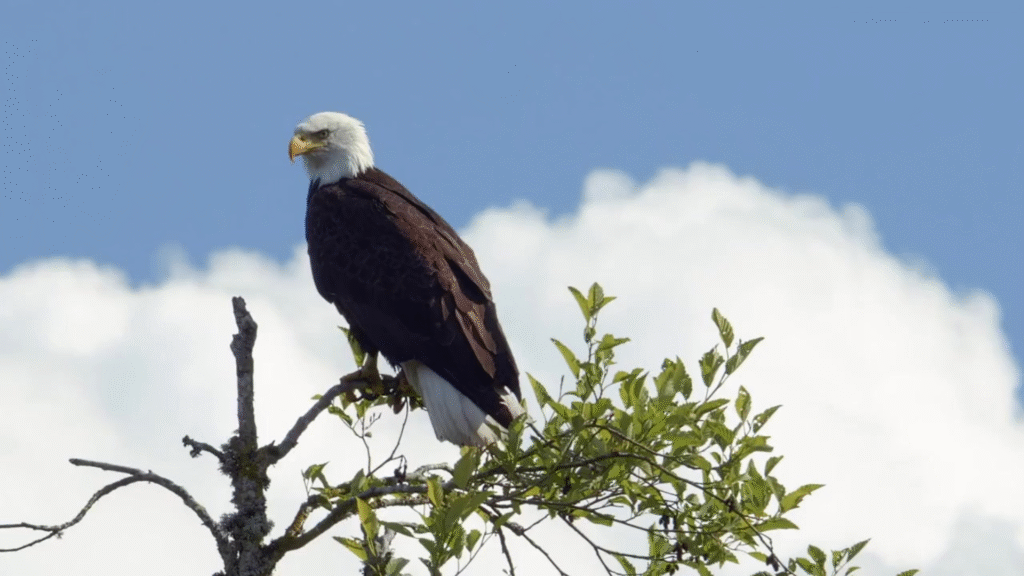
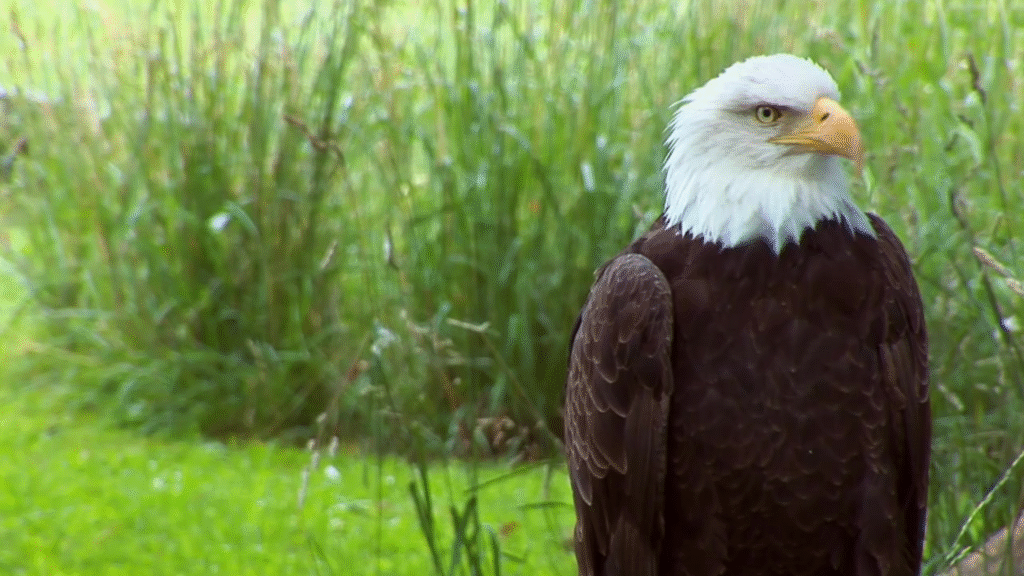
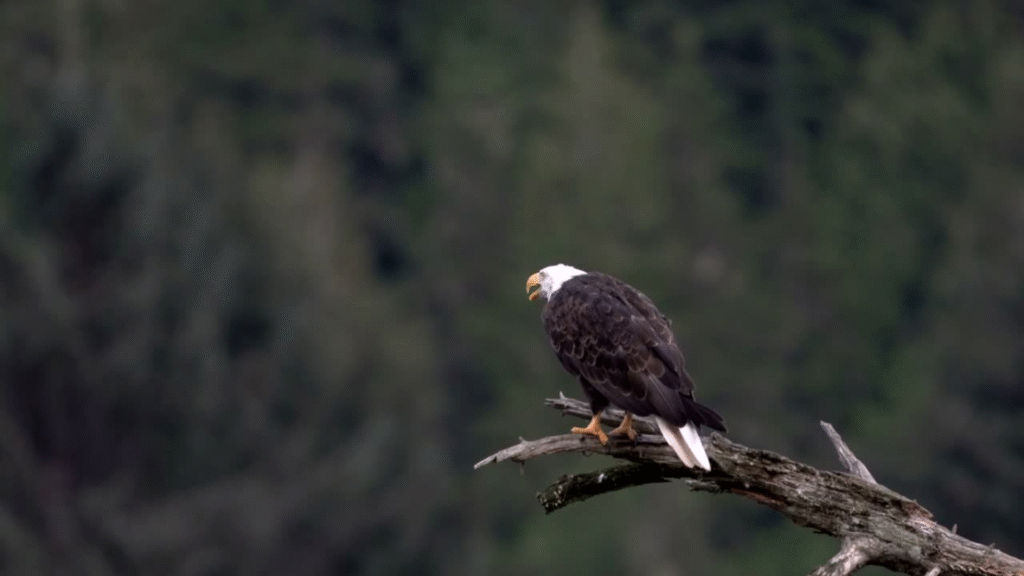
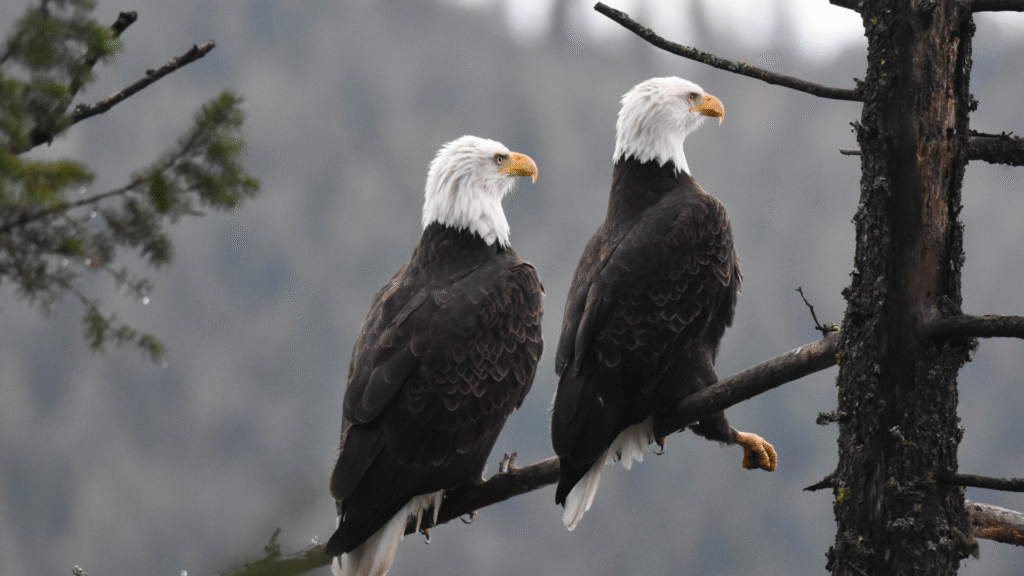
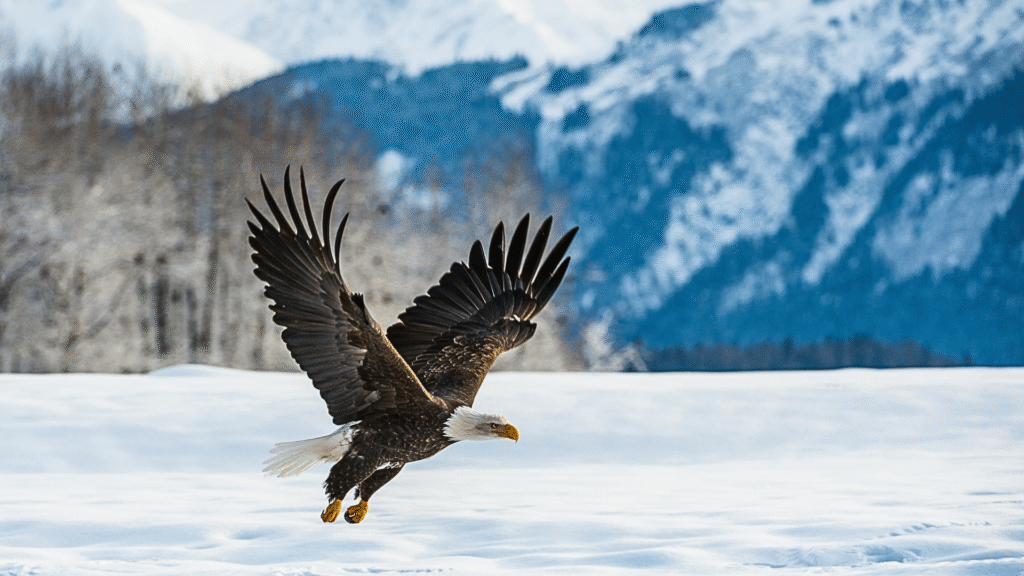
Diet
Bald eagles are opportunistic feeders, with a strong preference for fish. They often swoop low over water to gently lift fish from the surface using their sharp talons. In addition to their favorite catch-of-the-day, they’ll also eat waterfowl or small mammals when available and may scavenge if needed. Rather than focusing on fierce predation, bald eagles are highly adaptive and skilled at using the resources around them with remarkable efficiency.
Mating & Babies
Bald eagles typically mate for life and return to the same nesting territory year after year. Together, they build massive nests—called eyries—which can span over 8 feet across and weigh more than 2,000 pounds! These enormous structures are usually built in tall trees near water and added to each season.
The female usually lays 1 to 3 eggs, which both parents incubate for about 35 days. Once hatched, the eaglets grow rapidly under the watchful care of both mom and dad. Around 10 to 12 weeks of age, the young eagles begin to fledge, starting their own skyward journey.
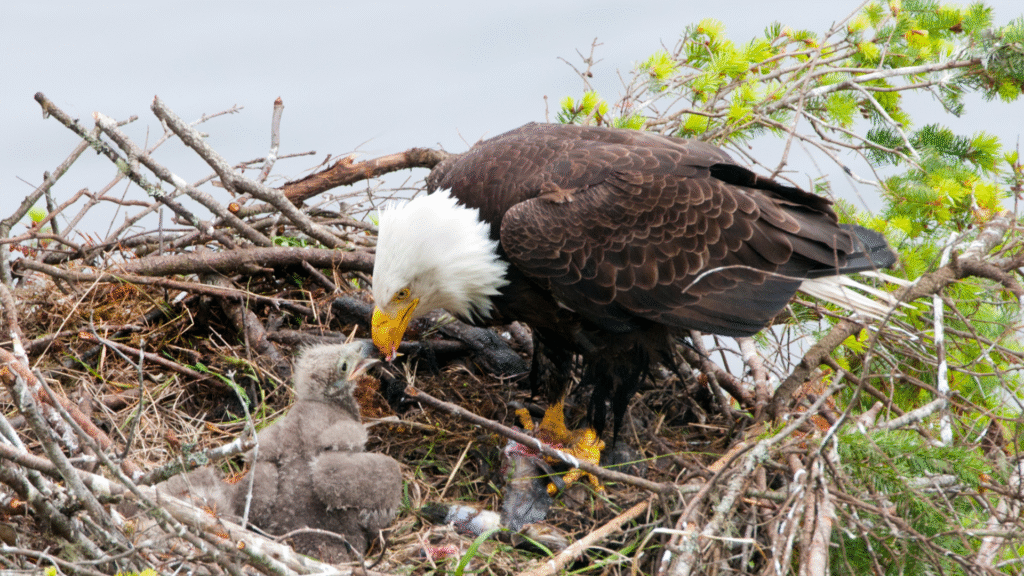
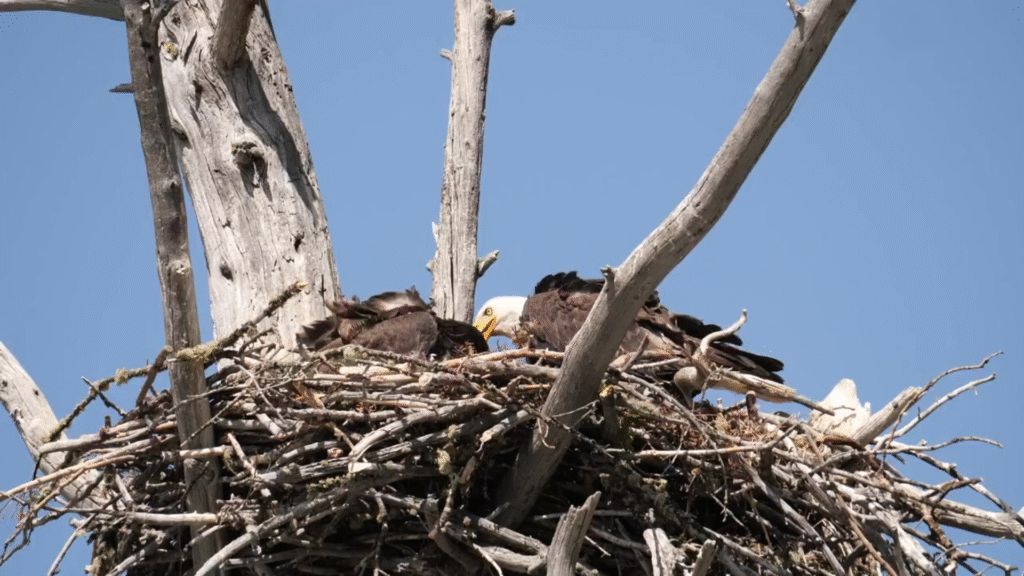
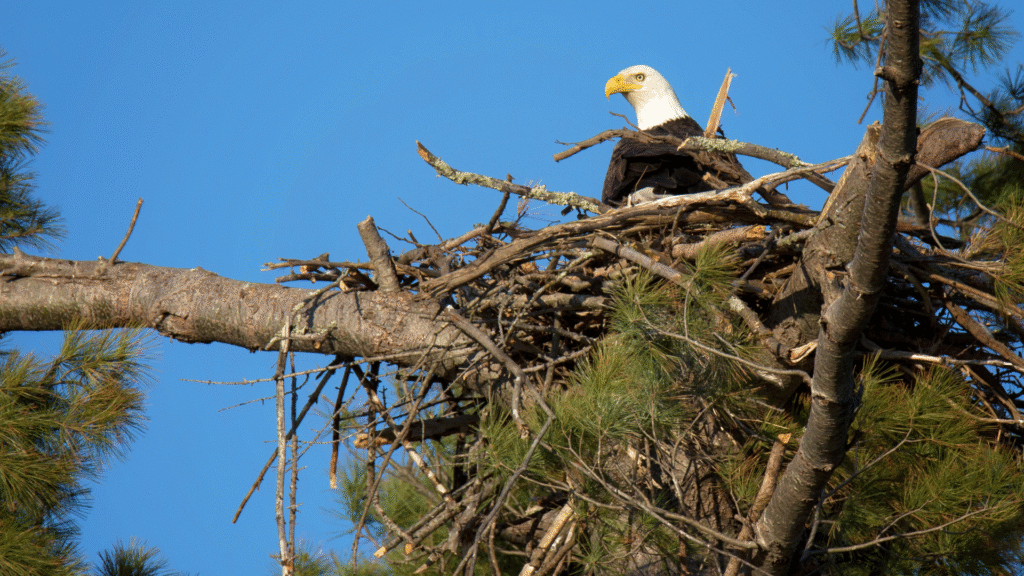
Fun Facts About Bald Eagles
- Not Actually Bald: The name comes from an old word meaning “white-headed.” Juvenile bald eagles are mostly brown and don’t develop the iconic white head and tail until around 4 to 5 years old.
- A National Icon: Selected as the U.S. national emblem in 1782, the bald eagle appears on coins, seals, passports, and official documents. It stands for strength, freedom, and endurance.
- Enormous Nests: One of the largest bird nests ever recorded was built by a bald eagle in Florida—it measured nearly 10 feet wide and 20 feet deep!
- Super Sight: Their eyesight is around four times better than ours, allowing them to spot movement from high above.
- A True Comeback: After populations declined due to habitat loss and pesticides like DDT, legal protection and conservation efforts helped the bald eagle rebound. It was removed from the U.S. Endangered Species List in 2007.
Why We Love Bald Eagles
There’s something deeply moving about seeing a bald eagle in flight. They’re majestic yet grounded, strong but nurturing. They symbolize the balance of independence and family, soaring high while staying connected to their roots. Their recovery story is also one of hope—proof that conservation works, and that we can protect what we love with persistence and care.
About Bald Eagles
Habitat: Rivers, lakes, wetlands, and coastlines across North America
Animal Classification: Birds
Species Family: Accipitridae (includes other eagles, hawks, and kites)
Region: Found throughout the U.S., Canada, and northern Mexico
Conservation Status: Least Concern (recovered from endangered status in 2007)
Characteristics/Behaviors: Monogamous, large nests, keen vision, excellent gliders, prefer fish-heavy diet
Conclusion
From the brink of extinction to a proud national symbol, the bald eagle’s journey is nothing short of extraordinary. Whether soaring over open waters or perched high in a treetop, these magnificent birds continue to capture hearts and imaginations. Their comeback reminds us that even the wildest dreams can take flight—and that nature, when given the chance, will always rise again.
Want to learn more about incredible birds and wildlife? Explore the Birds and North American Wildlife sections here on BearBunk and take your curiosity to new heights!

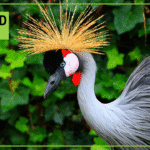




Leave a Reply